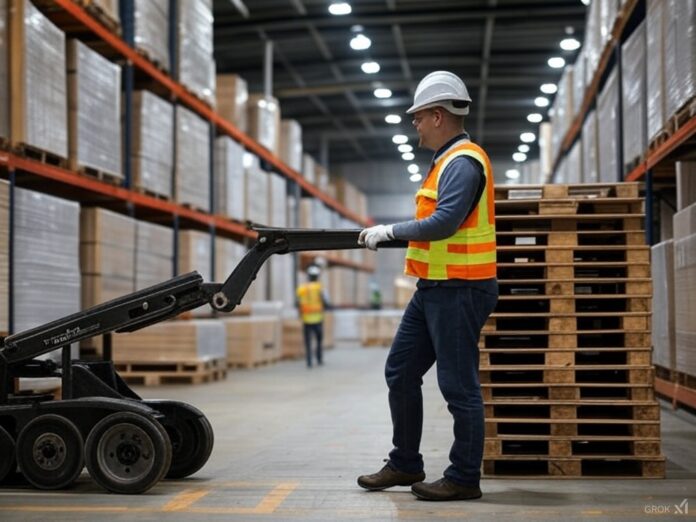Warehousing expenses are witnessing a surge in today’s e-commerce boom. Smart shelving boosts storage, and aisles shrink. Ordinary forklifts fail to navigate tight passages. Meet the reach truck—a small, highly manoeuvrable vehicle.
These legs provide stability to the loads without the need for a cumbersome counterweight. They are smaller in size and weight yet extremely manoeuvrable. Reach trucks work well in narrow aisles and can lift up to 60 feet. With HGVC special reach training, operators can master their proper application.
Gary Bernardout, founder and CEO of HGVC, highlights the importance of innovation: “The warehouse industry thrives on efficiency. Reach trucks are a testament to how technology solves everyday challenges in logistics.”
Why Reach Trucks Are Essential
Counterbalanced forklifts rely on weight balancing. Reach trucks, however, use stabilising legs. These legs keep loads steady without bulky counterweights. Smaller, lighter, and versatile, reach trucks excel in tight spaces and lift loads up to 60 feet. HGVC reach training for forklifts ensures operators are safety-certified and skill-sharpened.
“Efficiency isn’t just about speed; it’s about precision and safety,” says Bernardout. “Both of them are delivered by reach trucks; they are an integral part of any modern warehouse.”
The Many Types of Reach Trucks
Every warehouse has unique storage needs. Here’s how different reach truck types address them:
- Single-reach trucks: Ideal for one-pallet racks and aisles as narrow as 8 feet.
- Double-reach trucks: Fitted with telescopic forks to accommodate two pallets deep.
- Moving mast reach trucks: Booms that extend forward as an extra bonus for flexibility.
- Multidirectional reach trucks: Designed to accommodate elongated products such as wooden boards.
These variations make reach trucks very essential for the different types of industries.
Certified Training: A Must for Operators
OSHA requires that every operator in a powered industrial truck go through a certified course relevant to the specific truck. Employers must, therefore, make certain that operators are thoroughly trained and assessed before taking on independent tasks.
Bernardout emphasizes the importance of training: “Operators are just as vital as the equipment used. Training is important to reduce the risks while increasing productivity to its highest levels.”
Interestingly, a driver’s license isn’t required to operate a reach truck, though companies can enforce their own policies. HGVC offers tailored training programs to meet OSHA standards and ensure your team is well-prepared.
Safety Meets Productivity with HVGC Training
The reach training programme of HGVC also aims at improving safety and productivity. Warehouse workers gain an understanding of how best to drive in the tight aisles, how to operate the different kinds of reach trucks and how to handle high-density storage.
“At HGVC, we don’t just train operators; we empower them to excel,” Bernardout states. “As for the mission of this reach training, it is to connect technology with experience.”
Invest in training to change your operations for the better! HGVC’s certified programs prepare the team for efficiency, safety, and success. Ready to elevate your warehouse? Visit HGVC today to book your training session to reach a new level of operational excellence.







